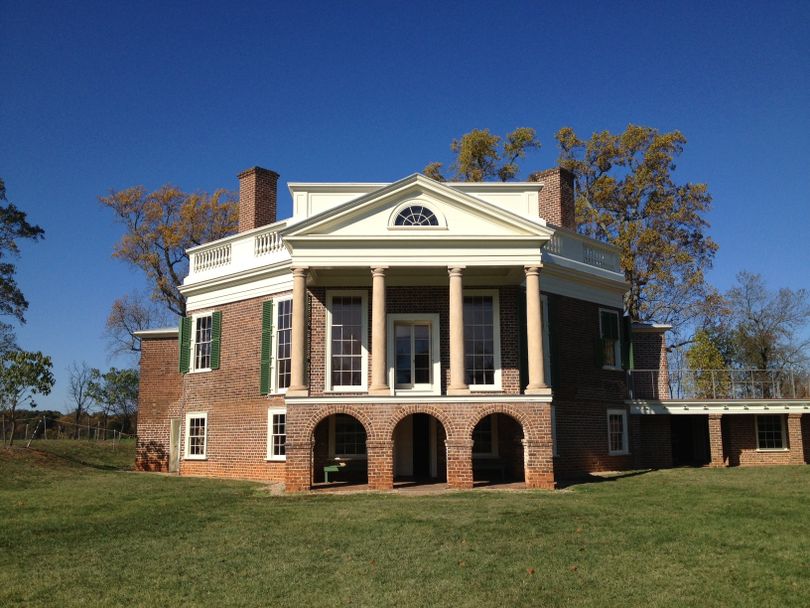Travel: Thomas Jefferson’s ‘Poplar Forest’

(Thomas Jefferson's 'Poplar Forest' retreat. Photo by Cheryl-Anne Millsap)
It is easy to think we know everything there is to know about certain historical figures. Thomas Jefferson, for instance. But even great men have their domestic secrets.
On a recent trip to Virginia I drove up the long winding road that led to Thomas Jefferson’s secret love: a stately, symmetrical and elegant home situated along an avenue of tall poplar trees. I was not visiting Monticello. Instead, I was at Poplar Forest.
Jefferson and his wife Martha inherited Poplar Forest from Martha’s father in 1773 but Martha died in 1782 before construction. It wasn’t until 1806 that work finally began, with Jefferson there to supervise the laying of the foundation. The octagonal house was his own design and he was intimately connected to the construction, corresponding frequently with the builders. Whenever possible he traveled to the site to check progress or make some necessary or desired change to the plans.
When his presidency ended in 1809, Poplar Forest became Jefferson’s personal retreat and sanctuary, shared only with his family, and a few most-intimate friends. He escaped to it whenever he could, often accompanied by his granddaughters on his extended visits. Jefferson created the elaborate gardens and landscaping surrounding the house, choosing the plants and flowers that would grow there. He continued to make the journey to Poplar Forest until age and poor health finally kept him away. His last trip was in 1823. After Jefferson’s death his son inherited Poplar Forest but sold it to a neighbor two years later.
As a private home, the house survived fire and numerous renovations and Poplar Forest remained a virtual secret for generations. It wasn’t until the 1980s, when development encroached, that the beautiful and fragile estate was purchased from private homeowners, organized and set aside. And the long, slow process of maintaining a national landmark was begun.
Today, standing just inside the front doors, a visitor is bathed in light streaming in through windows in every room and through the long, narrow skylight in the dining room, light that illuminates every corner of the octagonal structure. It is easy to imagine the relief Thomas Jefferson might have felt as he rode away from the demands of the life that had come to settle on him, away from the pressures of law and government, away from crowds of admirers and, even in that day, celebrity-watchers, and arrived at this quiet place in the rolling hills of Virginia.
To visit Poplar Forest now is a gift. A chance to see this place so beloved by a man who treasured his privacy, who craved quiet time to read and think. At this time it is a beautiful shell. Walls have been strengthened and repaired. Oak flooring--as was in the original structure--has been installed. Windows have been rebuilt, alcoves opened and doorways reconfigured, all to bring the beautiful, light filled, octagonal home back to it's original design. All of the work is being done by master craftsmen and artisans, after intensive study and research. And, to the extent possible, in the manner it would have been done in Jefferson’s time.
At this time, only a few pieces of furniture, including a reproduction of the 19th Century Campeachy chair--with its ancient but strikingly contemporary design--Jefferson preferred because of his painful arthritis.
Eventually, I suppose, the interior will be recreated to reflect the way Jefferson lived when he was there there. But at this moment, to be surrounded by the almost bare bones of the house is beautiful and evocative. It is impossible to stand in Jefferson’s bedroom, free of furniture and extraneous material, to see the empty alcove where his bed would have been, the rough handmade bricks lining his fireplace, to gaze out at the view of fields and forest visible through the tall windows, and not feel the powerful presence of the man who loved every inch of the place.
Cheryl-Anne Millsap is a travel writer based in Spokane, Washington. Her audio essays can be heard on Spokane Public Radio and on public radio stations across the country. She can be reached at catmillsap@gmail.com